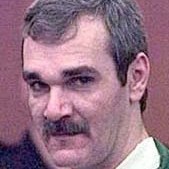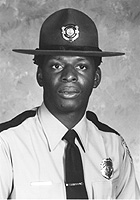
1963 - 2002
Richard Charles Johnson
Summary
Name:
Richard Charles JohnsonYears Active:
1985Birth:
February 18, 1963Status:
ExecutedClass:
MurdererVictims:
2Method:
ShootingDeath:
May 03, 2002Nationality:
USA
1963 - 2002
Richard Charles Johnson
Summary: Murderer
Name:
Richard Charles JohnsonStatus:
ExecutedVictims:
2Method:
ShootingNationality:
USABirth:
February 18, 1963Death:
May 03, 2002Years Active:
1985Date Convicted:
February 14, 1986bio
Richard Charles Johnson was born on February 18, 1963, in North Carolina. Not much is publicly known about his early life or upbringing, but by the age of 22, he was already drifting and hitchhiking across states. He appeared to live without a stable home or clear purpose, engaging in behaviors that would soon spiral into violence. By late September 1985, Johnson was on the road in the southeastern United States when he accepted a ride from 52-year-old businessman Daniel Swanson, who was traveling south from North Carolina to Florida.
Swanson's kindness in picking up a stranger would ultimately cost him his life. Along their route, Swanson picked up two more hitchhikers—17-year-old Connie Sue Hess and 20-year-old Curtis Harbert. The group continued their journey south through South Carolina. But something turned dark on the night of September 27. Johnson, armed with a .357 caliber revolver, murdered Swanson while he slept by shooting him in the head. He then conspired with Harbert to hide the body inside the car under a mattress, wrapped in blankets and wire.
Johnson’s actions didn’t stop there. With the stolen vehicle, the three continued their journey, driving through Clarendon County into Jasper County. Johnson’s drinking escalated, and witnesses noted his dangerous and erratic driving. His instability on the road drew the attention of passing truckers, who reported him to authorities. This ultimately led to a tragic encounter with a South Carolina Highway Patrol trooper that ended in another life lost.
murder story
On the morning of September 27, 1985, South Carolina Trooper First Class Bruce Kenneth Smalls was working his shift along Interstate 95 when he received a report from a truck driver about a suspicious driver operating a vehicle recklessly. Smalls responded quickly and stopped the vehicle in question, which was being driven by Richard Johnson. Inside were Hess and Harbert, and unknown to Smalls at the time, the body of Daniel Swanson was hidden under a mattress in the vehicle.

During the traffic stop, Smalls began questioning Johnson about the situation. Without warning, Johnson pulled out his firearm and shot Trooper Smalls six times, killing him instantly. Johnson then dragged Smalls’s body off the road, down an embankment, and fled on foot heading north. Meanwhile, Hess and Harbert ran in the opposite direction and eventually turned themselves in to authorities.
Smalls was 30 years old at the time of his murder. He was a Vietnam veteran, husband, and father of two young sons. He had joined the South Carolina Highway Patrol in 1976 and earned a promotion to Trooper First Class in 1980. His death shocked the state. Days later, more than 250 law enforcement officers from across the country attended his funeral.
Richard Johnson was arrested shortly after the murders. When apprehended, he had the murder weapon and several of Swanson’s stolen belongings in his possession. Initially, Johnson, Hess, and Harbert were all charged with Smalls’s murder. However, the charges against the two younger hitchhikers were dropped after they agreed to testify against Johnson.
At trial in February 1986, Johnson was convicted of the murder of Bruce Smalls and sentenced to death. One month later, in March 1986, he pleaded guilty to the murder of Daniel Swanson and to armed robbery, receiving a life sentence plus 25 years. However, in 1987, the South Carolina Supreme Court overturned his murder conviction in the Smalls case, ordering a retrial. In March 1988, Johnson was convicted again and sentenced to death for the second time. His appeals continued for over a decade but were repeatedly denied.
In 1999, Johnson came close to execution, but just days before his scheduled death, Connie Sue Hess came forward with a new statement claiming she was the one who had killed Trooper Smalls, and that Harbert had murdered Swanson. Her confession cast a shadow over the case and led to a temporary stay of execution. However, the courts later ruled her testimony unreliable due to her history of mental illness and inconsistencies in her story. Judges found her claims insufficient to grant Johnson a new trial.
Despite calls for clemency from religious leaders, the NAACP, and even Smalls’s own mother, South Carolina Governor Jim Hodges refused to halt the execution. Johnson was executed on May 3, 2002, by lethal injection at Broad River Correctional Institution. His final words thanked his supporters and urged them to continue fighting against the death penalty.
The case sparked controversy, not only because of the shifting witness testimonies and lack of physical evidence linking Johnson directly to the murder of Smalls, but also due to the political and racial implications. Johnson, a White man, was one of the very few ever executed in the United States for the murder of an African-American victim. A later study revealed that he was one of only 16 White defendants executed for killing a Black victim since the 1976 reinstatement of the death penalty.
Years after the tragedy, Bruce Smalls’s legacy lived on through his son Kevin, who grew up to become a police officer himself. Kevin spoke openly about his father’s dedication to his community and the impact of his sacrifice. In 2009, the stretch of I-95 where Smalls was murdered was renamed in his honor.